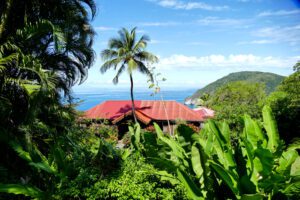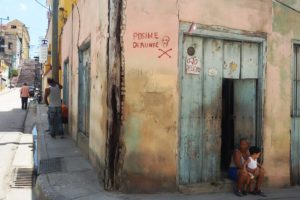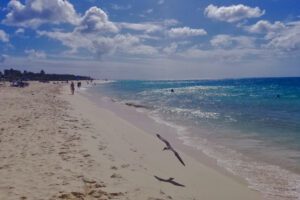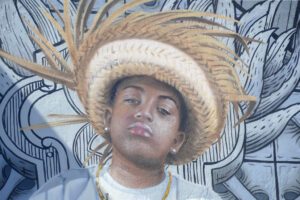Apart from the main double-winged island, Guadeloupe actually consists also of four smaller isles that are absolutely worth at least a day trip. The most famous of those gems scattered around the main, butterfly-shaped island is certainly Marie Galante, and in this post, I’m telling you what you should not miss on your visit – even if you’re going there only for a day.
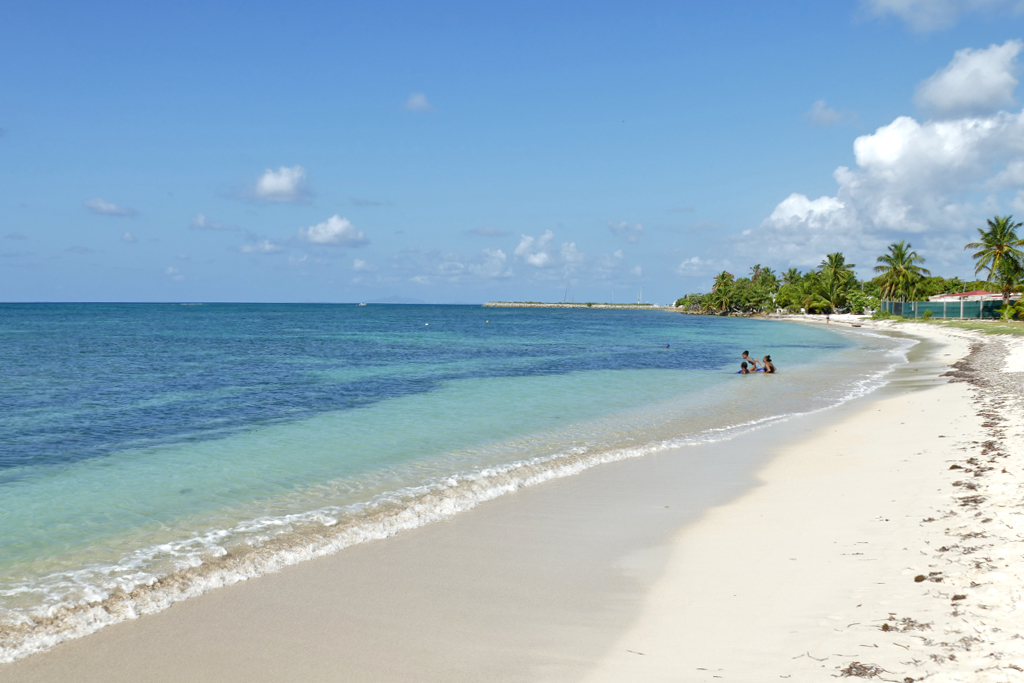
Sail Away
It’s Friday morning, and as I get to the ferry terminal in Saint François around 6, there’s already quite some hustle and bustle going on. What a stark contrast to the empty and quiet streets that I was walking to the bus stop in Sainte Anne!
I purchase a round trip to Marie Galante and with it a full-day tour of the island. Next to the dock is a small hole-in-the-wall café where I get my morning fix before boarding.
I’m ready!
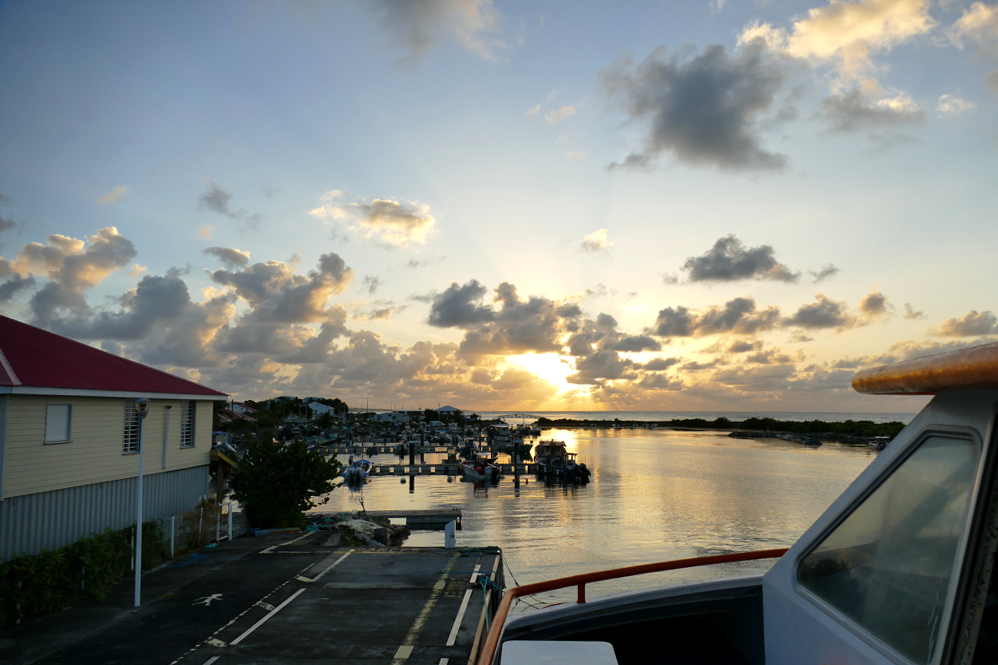
About an hour later, our ferry docks on the northwestern shore of Marie Galante in the quaint town of Saint Louis. The crowds push off the boat and then disperse in small groups along the jetty. Some day trippers have brought bikes with them and can set off straight away. Others eagerly read the signs that the bored tour guides standing next to the jetty are holding in the air. Excuse me, are you waiting for me?
Near the very end of the jetty, I spot a teenager in leggings and flip-flops with a sign that says El Rancho. This is the company I booked with. As I greet her eagerly, she just asks if I have a reservation. Okay, teenagers tend not to be in a chatty mood all the time.
I hand her my reservation.
Then, we are waiting in silence.
More day trippers arrive.
And then we wait some more as some of them have to use the bathroom.
And then the moment comes that we are finally all set and can get going.
Exploring Individually vs Visiting Organized
While I support and even recommend exploring by public bus when staying on the two large islands of Grand Terre and Basse Terre, I would advise against it on Marie Galante. At least if you are on the island just on a day trip.
There are two good reasons against visiting by public bus.
Yes, there are public minibusses on the island, so far so good. However, there is no fixed schedule. But most importantly, they only run between the larger towns of Saint Louis, Grand Bourg, and Capesterre. This is just a fraction of the island! I’m not saying you won’t have a good time, because Grand Bourg is a charming town with a very nice beach. The coast north of Saint Louis is also gorgeous, and you could even get there there walking if necessary. Nevertheless, the rest of the island remains largely inaccessible to you.
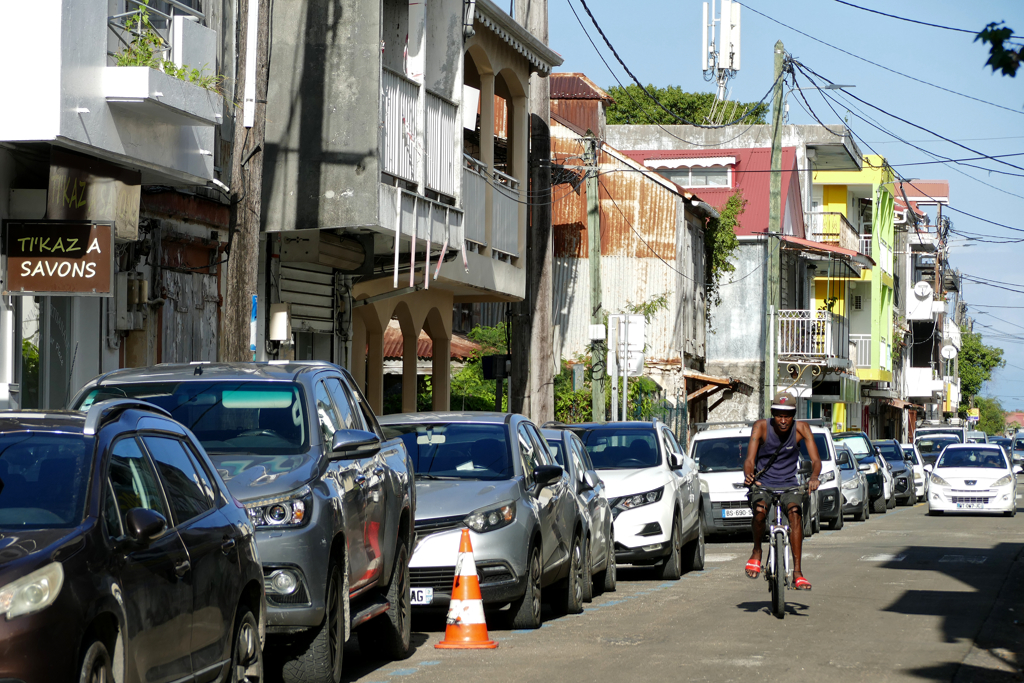
The second reason is that a full-day organized tour starts at 25 €uros. That’s an incredibly good price for a full service: You’ll be picked up at the ferry port, taken to all the relevant sites and landmarks in an air-conditioned bus and, to top it off, delivered to one of the most beautiful beaches by far. Oh yes, there is also lunch before sunbathing, but I’d rather skip that because it was extremely bad. At the end of the day, the bus drops you off just in time for your cruise back to Grand Terre. As I said: Full service.
For 25 €uros, I saw a lot and had a wonderful day.
If you buy your ferry passage for 41 €uros round trip in the port of Saint François, you can add a tour booking right away on the spot.
However, it is definitely recommended to check out beforehand which organized tours and trips are available.
Saint Louis
Depending on where you leave Grand Terre, the ferry will take you either from Pointe-à-Pitre to Grand Bourg or from Saint François to Saint Louis in about an hour. Coming from Sainte Anne, it was more convenient for me to choose the latter route.
Although Saint Louis is one of Marie Galante’s important tourist hubs and also has a fishing port, the main source of income is still the cultivation of sugar cane. Today, the cane is mostly used in the distillation of Guadeloupe’s high-quality Rhum Agricole. Livestock is also kept as the farm animals are used to transport the sugar cane.
Nevertheless, tourism is becoming an increasingly important part of economic activity. In addition to the ferry port, Saint Louis has been the venue for the international water sports event MG Race since 2014.
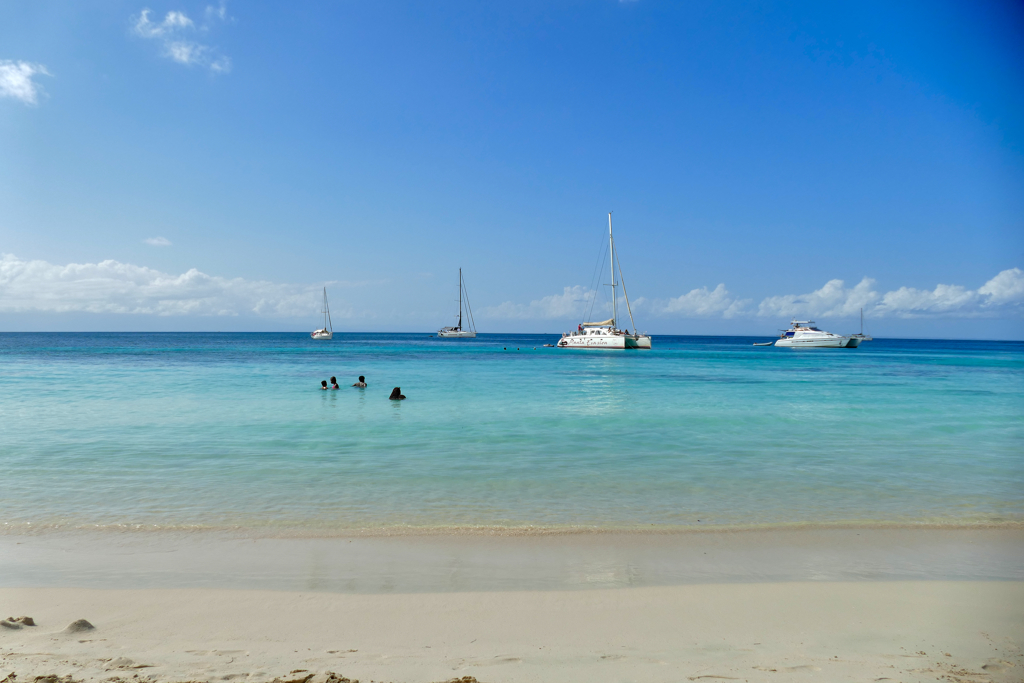
The Plage de Moustique beach is just over three kilometers north of the town. It is absolutely idyllic with crystal clear water and soft white sand. In short, a real postcard beach and one of the most beautiful beaches I have seen in my entire life! It is all the more surprising that it is often almost deserted.
We still have a lot to do today, so Saint Louis is just the starting point for our island tour.
Like a two-legged herd, we follow the taciturn teenager across the center of Port Louis. We get on the bus at the large parking lot and where I expect a fat, middle-aged driver sitting behind the wheel, the teenager takes place and gets the engine running. Hmm, she definitely looks much younger than she probably is.
Whatever, we’re ready to go.
Grand Bourg
We drive along the west coast and after about 20 minutes, we arrive in Marie Galante’s main town Grand Bourg. The teenager parks the bus opposite the Lycée Hyacinthe Bastaraud – to this date, I remember the name as I had memorized it in case I lost my way. After a brief explanation, she releases our human herd into the wild.
Grand-Bourg accounts for a significant portion of the island’s economic, commercial, and administrative activity. The port is the island’s most important hub and hosts fishing and tourist activities.
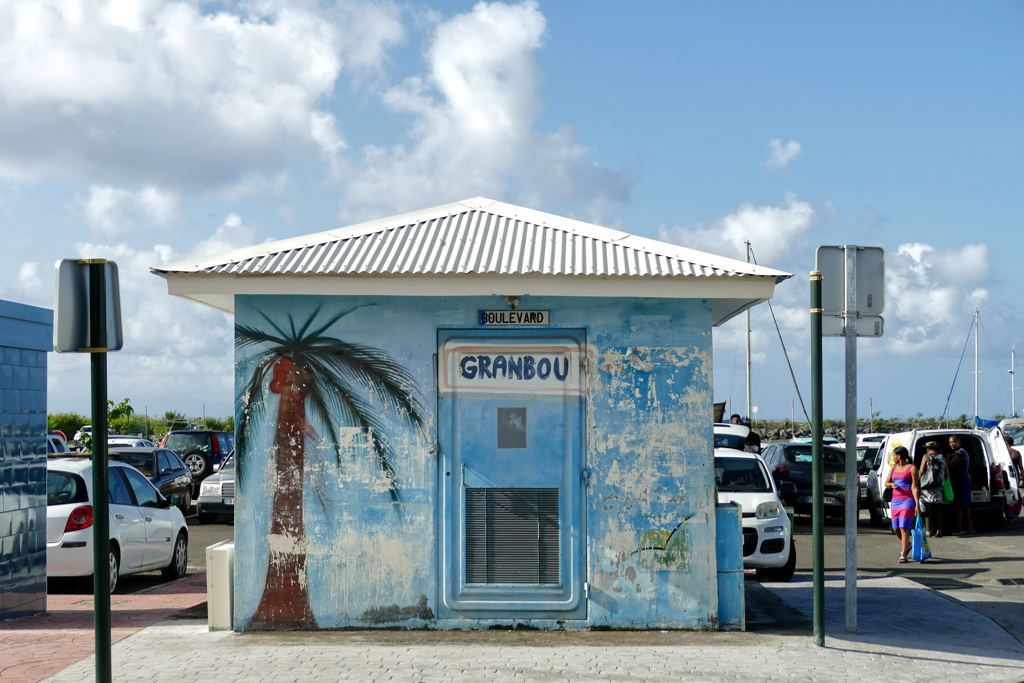
But just like in Port Louis, a significant part of Grand Bourg’s income still comes from growing sugar cane. The Sucrerie-Rhumerie de Marie-Galante has been processing it since 1845.
Their sugarcane factory has a crushing capacity of 100 to 150,000 tons per year. A substantial portion of the cane processed in the plant is ultimately destined for the production of local rum.
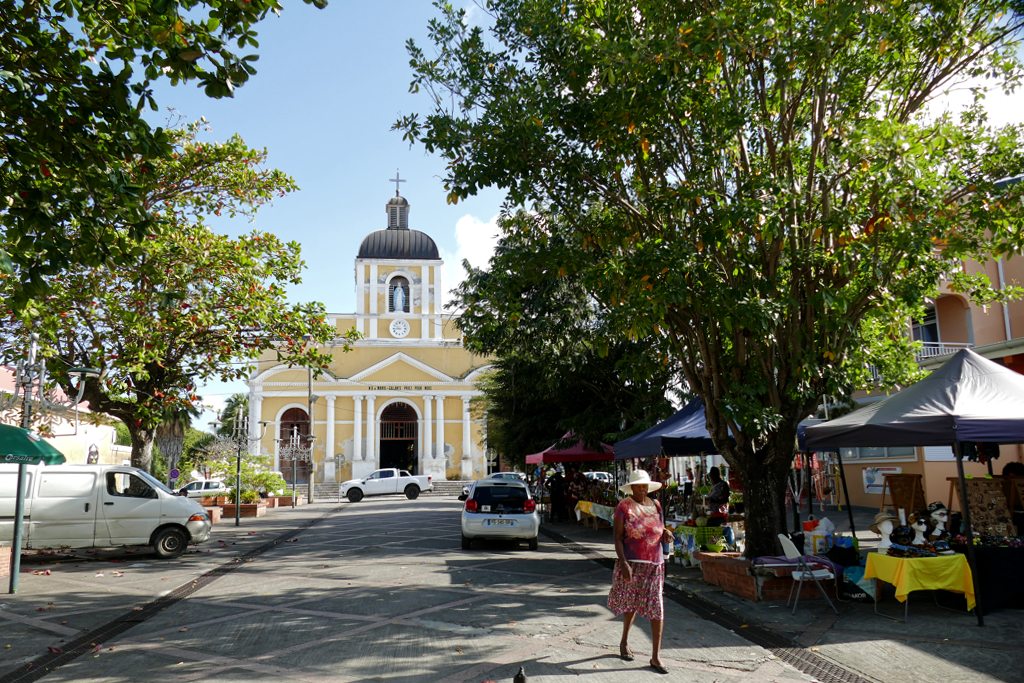
The only real attraction in Grand Bourg is the Église catholique de l’Immaculée Conception de Notre Dame . A small market consisting of a few stalls is held in front of the stately house of worship. To be honest, it’s not different from the markets on the big islands: preserves, spices, punch, and lots and lots of Madras checkered trinkets.
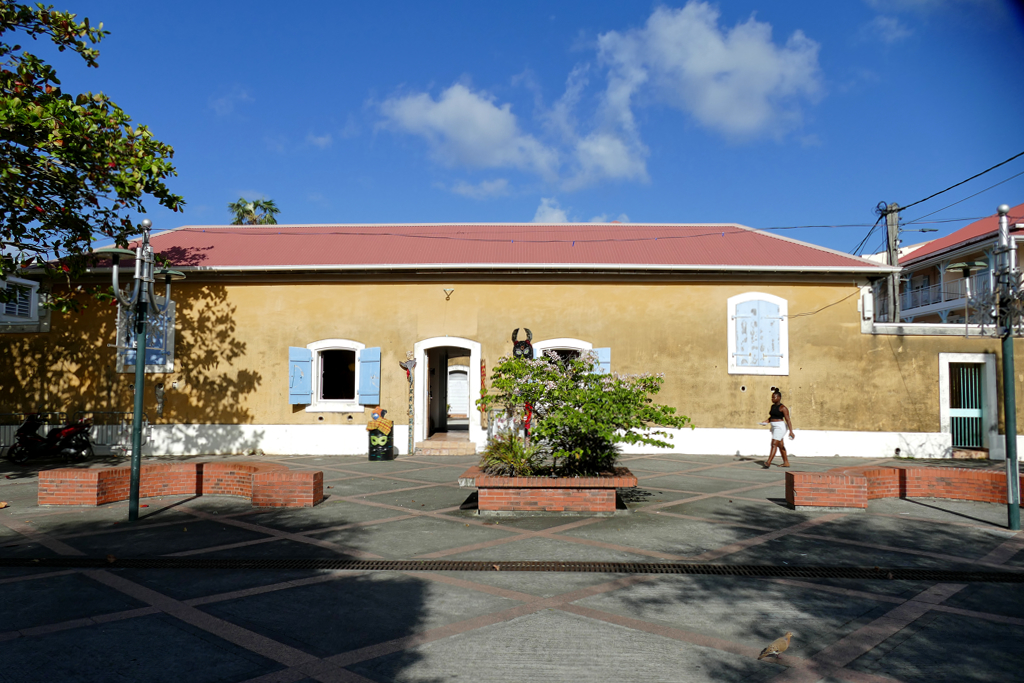
Nevertheless, it is nice to take a little walk through the streets and alleys. If you need a break, you can make yourself comfortable on a bench below some huge trees across the stately town hall. Or you enjoy a refreshment in a café along the Boulevard Maritime and stroll alongside the waterfront to the beautiful city beach Plage de Grand Bourg. If you are not taking part in an organized tour, you can spend a few relaxing hours in this serene place.
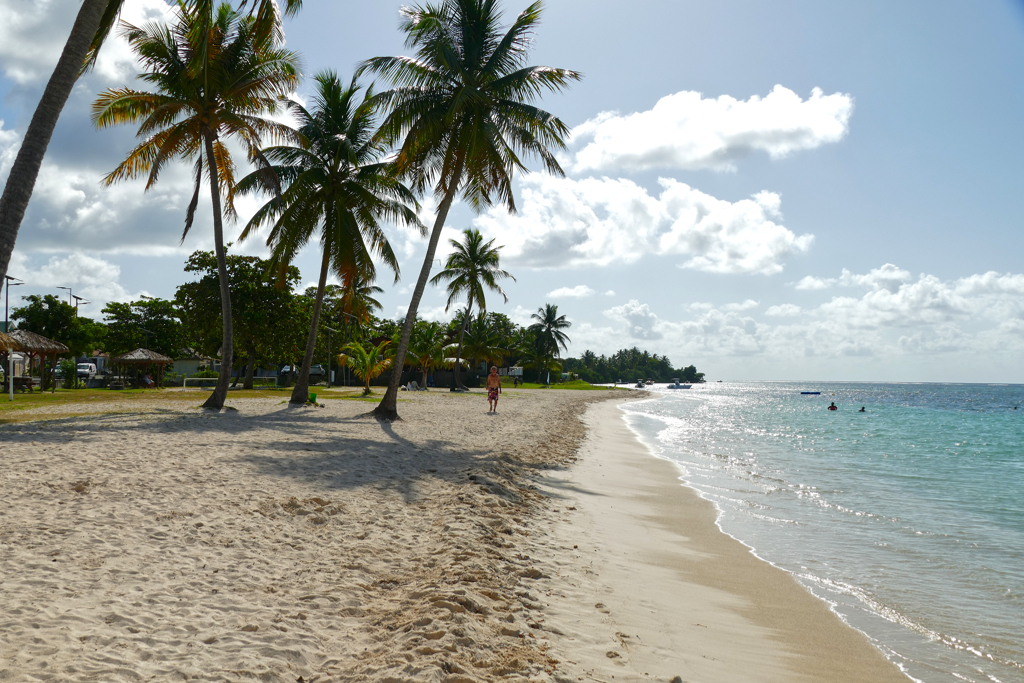
For me, this is not an option. Instead, I rush back to the Lycée Hyacinthe Bastaraud, where the bus is already waiting for me with the engine running.
Let’s keep going.
Écomusée Murât
Our next stop is the Habitation Murât. It is the largest sugar cane plantation in Guadeloupe. If you’re not on a guided tour, you can actually walk there from Grand Bourg in less than half an hour.
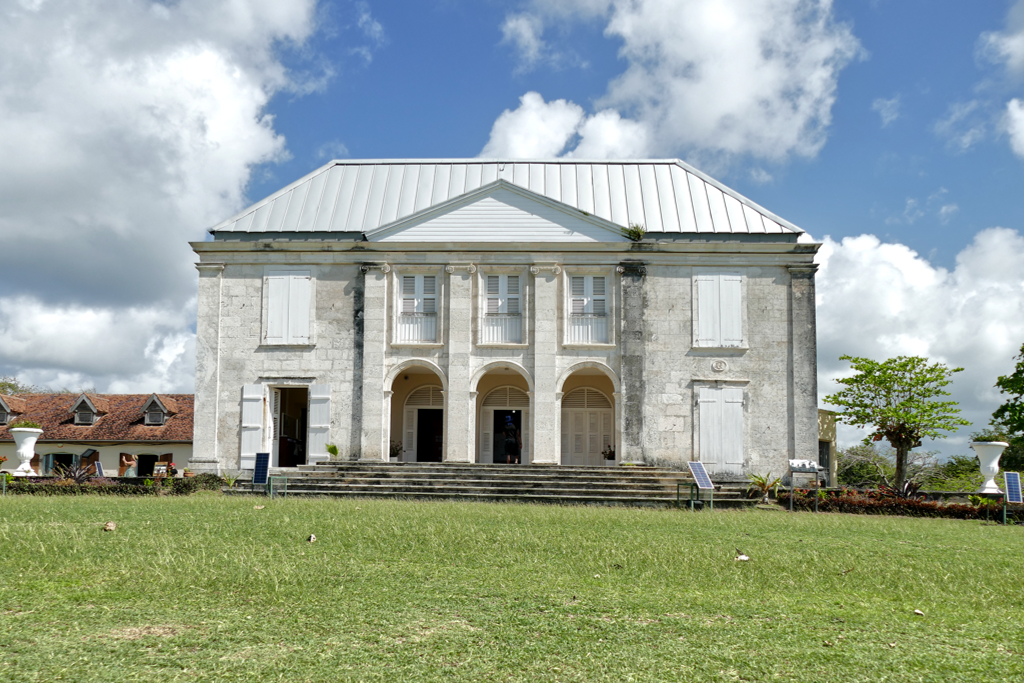
It is said that Dominique Murât’s wife, Jeanne Laballe, designed the mansion at the beginning of the 19th century. Well, that’s what wealthy wives do to pass the time.
The farm began operations in 1839, and an incredible 307 slaves carried out the work.
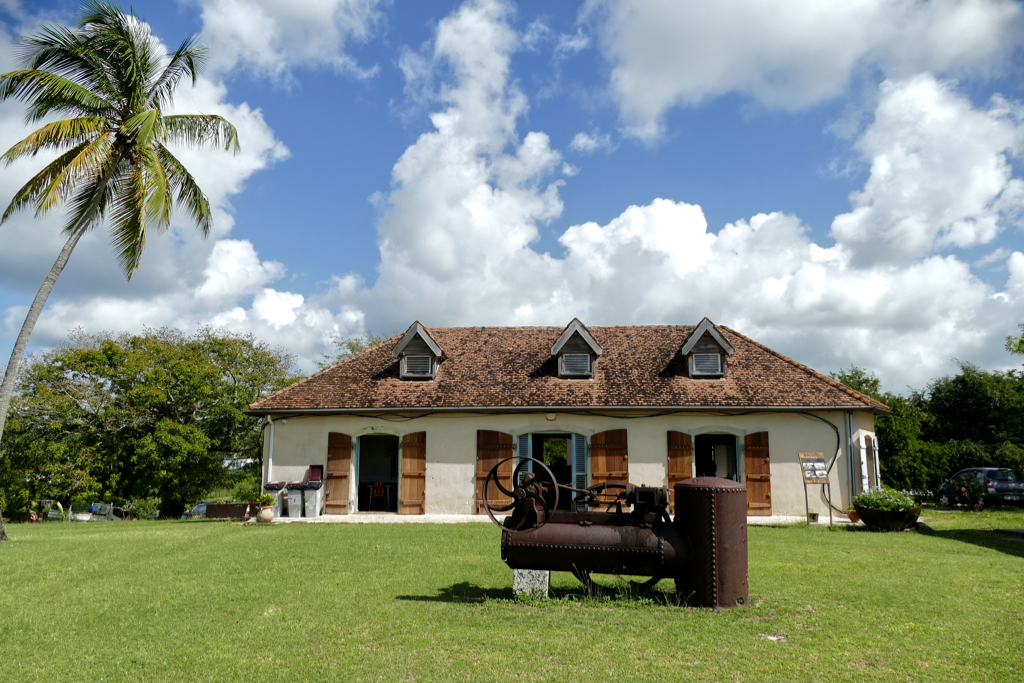
Today the estate is a museum showing the sugar history of Guadeloupe during the colonial period. It includes five iconic sites where you can trace the island’s history.
A magnificent mansion houses a permanent exhibition about everyday life on the plantation. The museum administration uses what was the former kitchen building, and today’s documentation center served as the slave hospital in ye olden days. A one-time oxen yard was converted into a medicinal plant garden in 1979. The animal mill dates from the turn of the 18th century and is the forerunner of the windmill from 1814. Both were used to crush the cane, the early model with the help of livestock. Finally, there is the distillery which is the largest building on the premises.
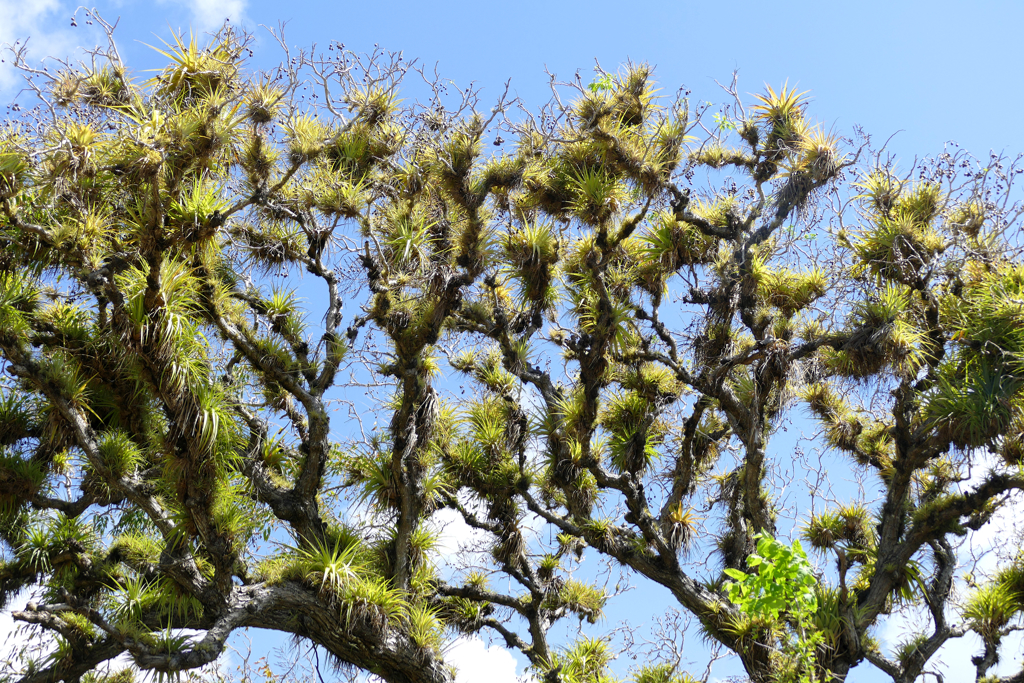
Visits to the impressive complex are free and possible from Monday to Friday between 9 a.m. and 12.30 p.m. and then again from 2.30 p.m. to 5 p.m. On weekends, they close at 1 p.m.
Sirop de Batteries And Kassaverie
Now we have seen the plantation, hence, we finally want to see – and above all taste – what is ultimately produced from all the sugar cane around us. The teenager drives us to the famous Le Moysan plant.
Interestingly, we don’t get a tour, just a tasting. That’s totally fine with me, especially since the nice ladies behind the counter explain the process of producing the sweet drink, which they pour for us at the same time.
The so-called Sirop de Batteries is a concentrate made from boiled sugar cane juice obtained by evaporation. It is a very common product in Guadeloupe and Martinique and is primarily used for Tafia, a drink similar to rum which is not left to age.
While the higher quality Rhum Agricole is made directly from sugar cane juice, industrial rum is produced from molasses, a sugar residue. In contrast to the Rhum Agricole of the French Antilles, industrial rum is produced particularly in the former English and Spanish colonies.
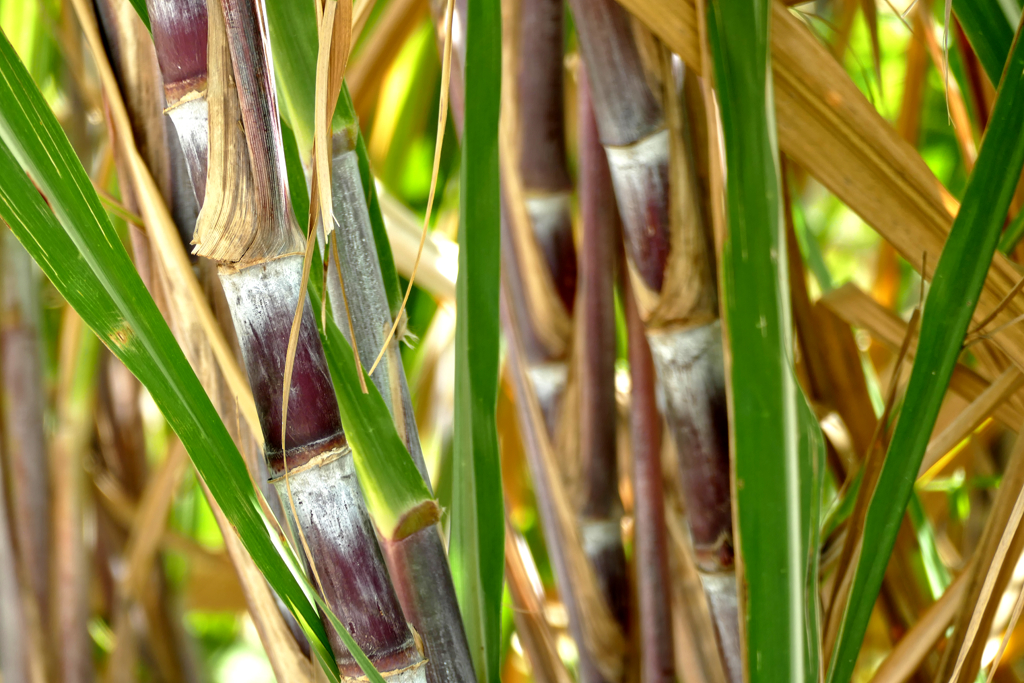
Le Moysan is a small family business that produces pure sugar cane syrup and of course, also sells it in their store. Since I still had a lot of time in the French Antilles ahead of me, I didn’t buy any souvenirs yes. That was a bit of a shame as their syrup is really tasty.
The Manioquerie Quellery is just a few kilometers from Le Moysan. It is the best place to visit if you want to find out everything about the production of cassava and cassava flour. They passionately explain to you all the steps involved in planting and later processing this delicious root. Of course, you can also try and buy cassava in the form of flour, chips, cookies, and cakes.
Normally, these types of stops on organized tours are very consumerist and annoying. On this tour, however, it was completely okay because the explanations were really interesting and you didn’t feel like the room would only be opened again when everyone had purchased at least five pounds of cassava flour.
Habitation Bellevue
Well, the next stop at a production facility was something very special, anyway.
The Bellevue estate, which began distilling agricultural rum in 1821, is now Guadeloupe’s largest exporter, producing more than 900,000 liters of rum annually.
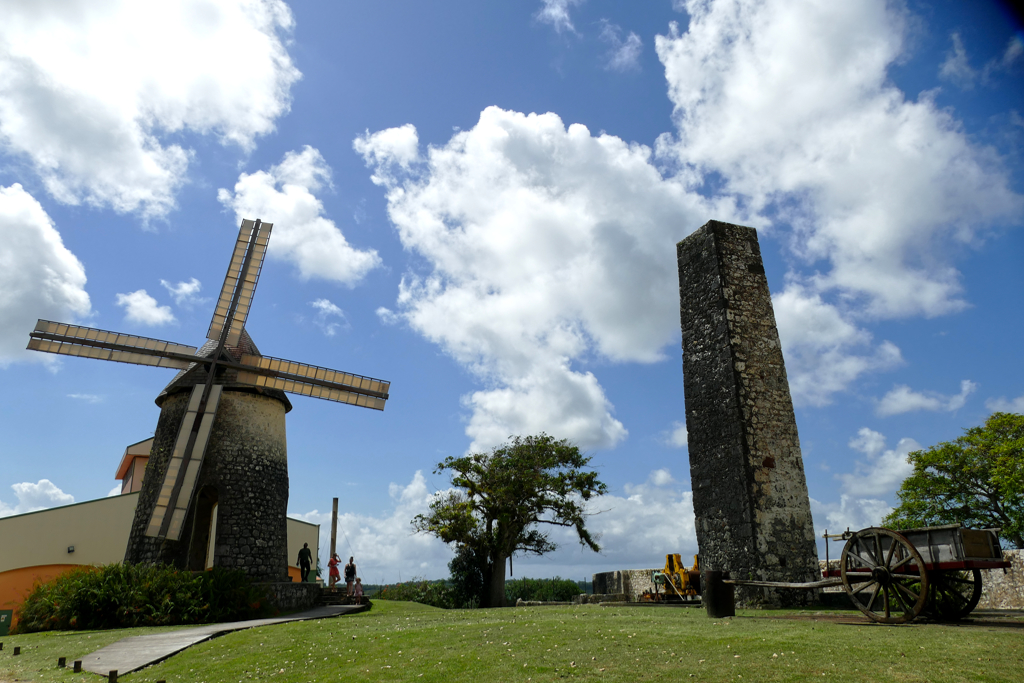
The estate is an independent family business whose rum is known for its exceptionally high quality. The factory is also characterized by 100 percent environmentally friendly production, making it the first eco-positive distillery in the world!
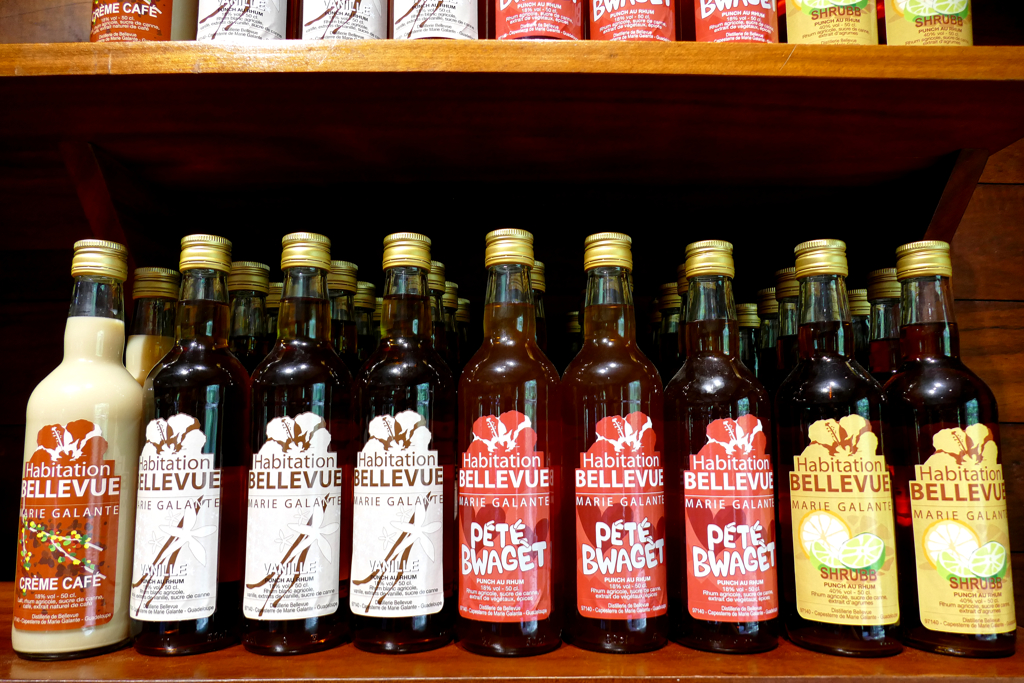
Bellevue is located in the heart of the island’s largest sugar cane plantation between Capesterre and the Bielle distillery. In front of the production hall, there is a magnificent and authentically restored mill. It is a witness to centuries of sugar and rum production.
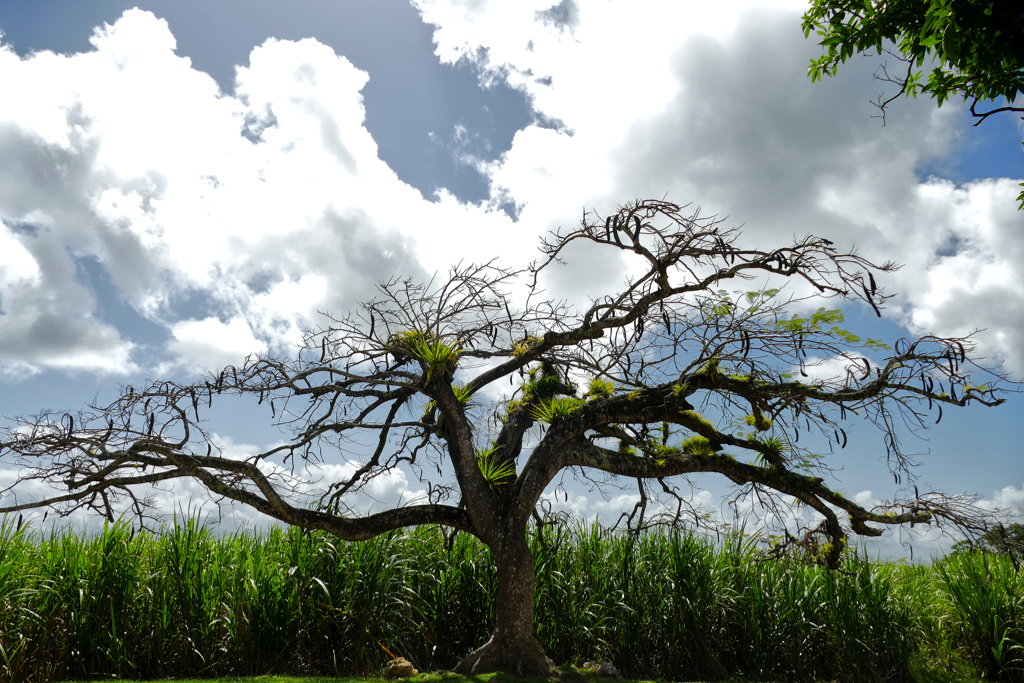
There is also a souvenir shop with trinkets and a liquor store on the property. Samples are generously poured here even before noon. I’m not used to day drinking, therefore, I left the merry rum sampling after a small shot of pineapple punch and went for a walk along the access road. Actually, the beautiful scenery, the endless sugar cane fields, and the tropical trees made my head more spin than the booze.
The estate, including its shops, is open daily from 9 a.m. to 1 p.m.
️Gueule Grand Gouffre to Anse Canot
Nature has created many treasures on the so-called Island of a Hundred Windmills. One of the most impressive ones is on the edge of the northern cliffs, around five kilometers from Saint Louis: Here lies Gueule de Grand Gouffre, the island’s most precious geological jewel.
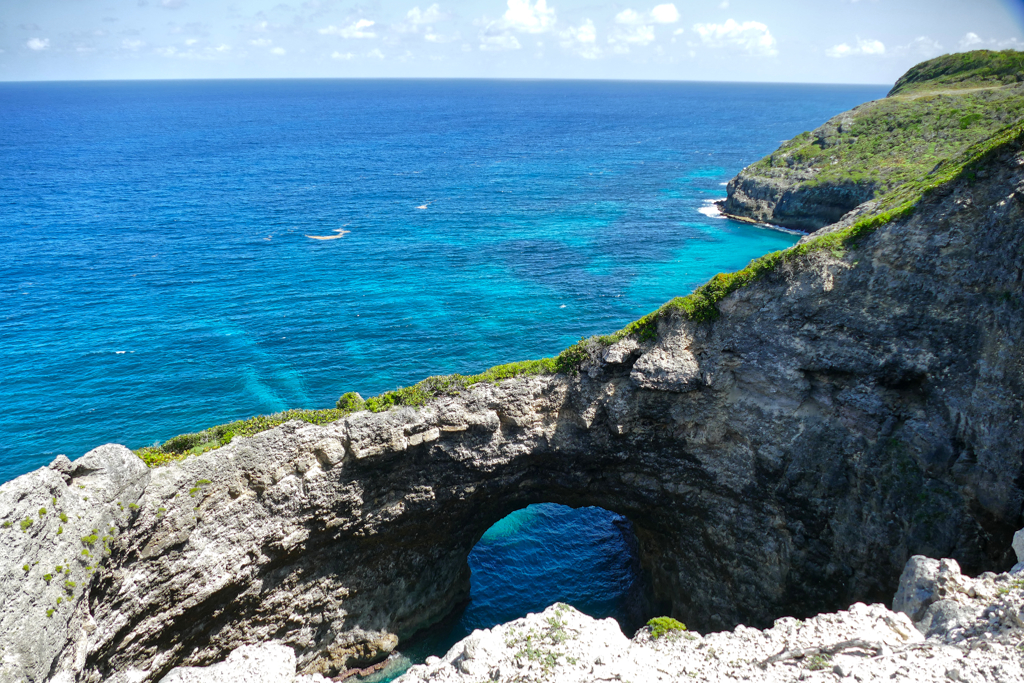
After the teenager maneuvers the bus up a steep road, we walk along a short path and then what translates to the Maw of the Great Abyss gapes before us. The collapse of the limestone vault inside the earth created a gaping chasm. From a height of 50 meters, we have a dizzying view of the abyss. A true explosion of colors enchants us.
Nature is such a talented builder.
This was actually our last sightseeing stop, now it’s time to relax and laze around. We’re not very far from the small, intimate bay of Anse Canot, where the lunch picnic is already waiting for us. I won’t dwell on this part of the program because it was the only disappointment in what was otherwise a day full of beauty and wonder.
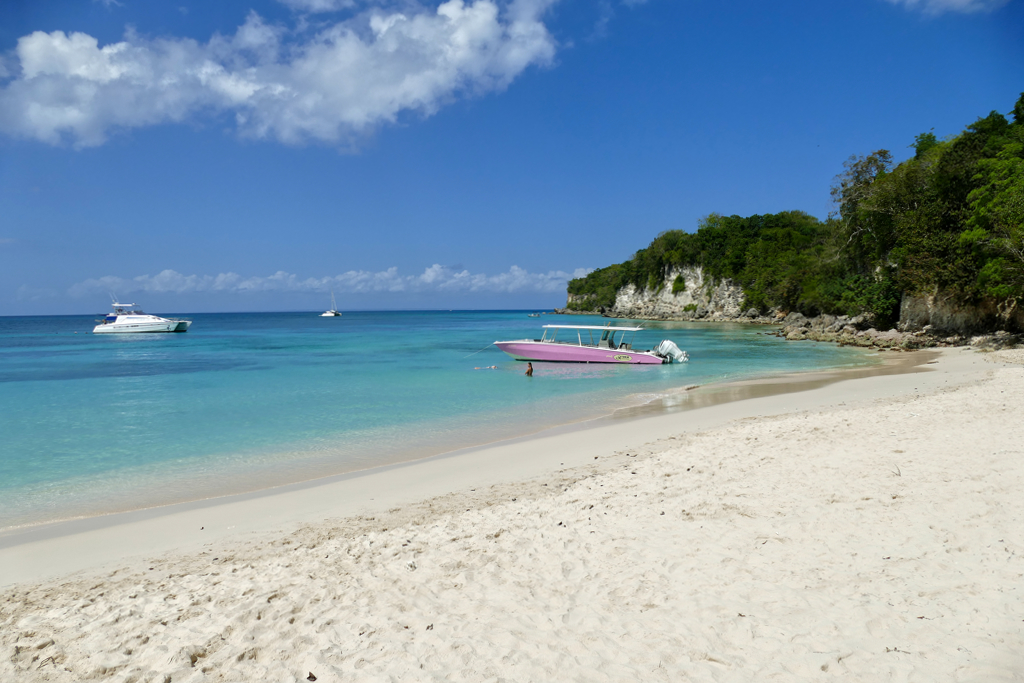
Anse Canot is a small protected bay. It’s perfect for relaxing and swimming. The place is also known for the wealth of its underwater fauna. So be sure to bring a mask and snorkel with you on your trip. In fact, I’ve listed below what else you shouldn’t forget before you set off on a day trip to Marie Galante.
What To Pack For a Day Trip to Marie Galante
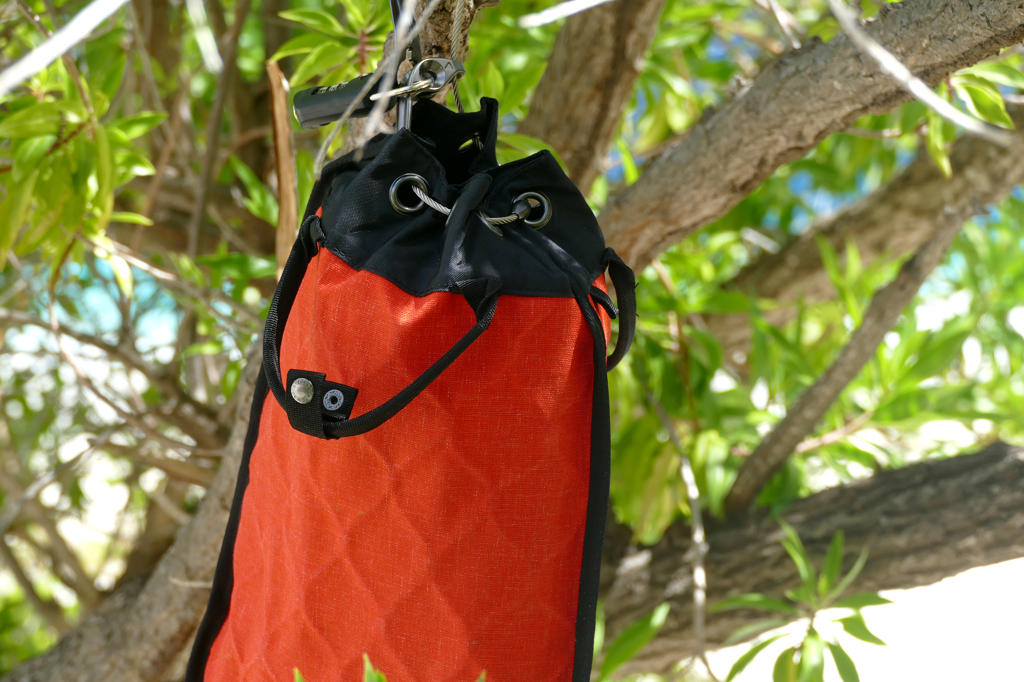
How to Get There
You can join a pre-organized day trip, but you can also easily arrange your excursion yourself.
To visit Marie Galante or La Désirade, you need to board either in Pointe-à-Pitre or in Saint François. The latter port is more convenient if you are coming from the central or the eastern part of Grand Terre. Note that the ferries take you to different ports of Marie Galante: coming from Pointe-à-Pitre, you’ll arrive in Grand Bourg while the ferry from Saint François takes you to Saint Louis.
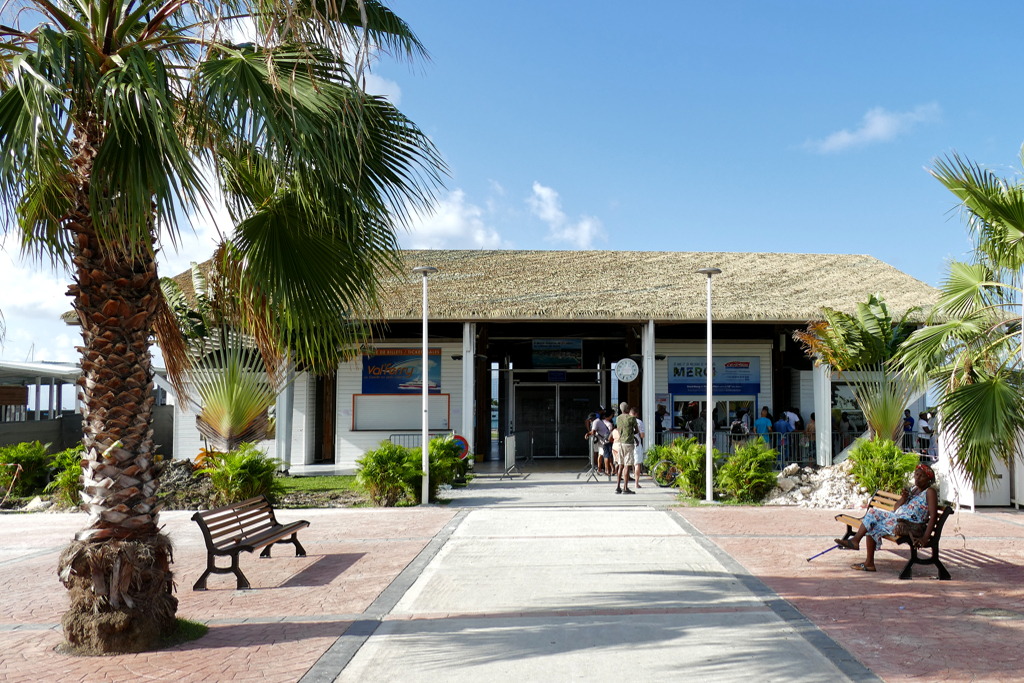
Depending on the port of embarkation, the day, and the company, tickets start at 29 €uros, but usually they are around 45 to 50 €uros. These rates are for a roundtrip and include luggage up to 25 kilos.
If you’re planning on visiting two of the smaller islands, you can buy a combined ticket for 60 to 70 €uros.
For Marie Galante, you can usually add an island tour package that includes visits to the most important sights, lunch, and the afternoon on a beach. Although there is a limited bus service on the island, I would recommend booking this complete package, especially given the limited length of your stay.
If you want to visit Guadeloupe’s smaller islands, you have to go on a tour unless you bring your own yacht. Therefore, here are some great tours to choose from*:
Where to Stay
Large groups of day trippers visit Marie Galante every day. I was one of them, and since that day was one of the best during my trip to the French Antilles, I would always come back to stay for a bit longer. Marie Galante has a far more laid-back vibe than Grand Terre. Also, the island is lined with around fifteen beaches which are considered to be the most beautiful in Guadeloupe. Some of them can be easily reached by walking from the larger settlements of Saint Louis, Grand Bourg, and Capesterre which are connected by minibusses. Although I’d opt for an organized tour when on a day trip, depending on Marie Galante’s public bus system on a more extended stay is absolutely fine.
On this map, you’ll find suitable lodging options in case you decide to lay down your head in Marie Galante*:
Booking.comFor stories and information on other parts of Guadeloupe, check out my posts
Best Places to Visit in Grand Terre, the Eastern Wing of GUADELOUPE (also by public bus)
Best Places to Visit in Basse Terre, the Western Wing of GUADELOUPE (also by public bus)
The Best Beaches in Guadeloupe You Can Easily Visit by Public Bus
Best Street Art in GUADELOUPE
For general information on the island of Guadeloupe, go to the main post
Grand GUADELOUPE: Complete Guide And Perfect Itineraries (also for travels by public bus)
There, you’ll find comprehensive information and tips that will make your trip much smoother and more enjoyable.
Map
On this map, you can spot all the interesting places I’m introducing in this post.
Clicking on the slider symbol at the top left or the full-screen icon at the top right will display the whole map including the legend.
Pinnable Pictures
If you choose to pin this post for later, please use one of these pictures:

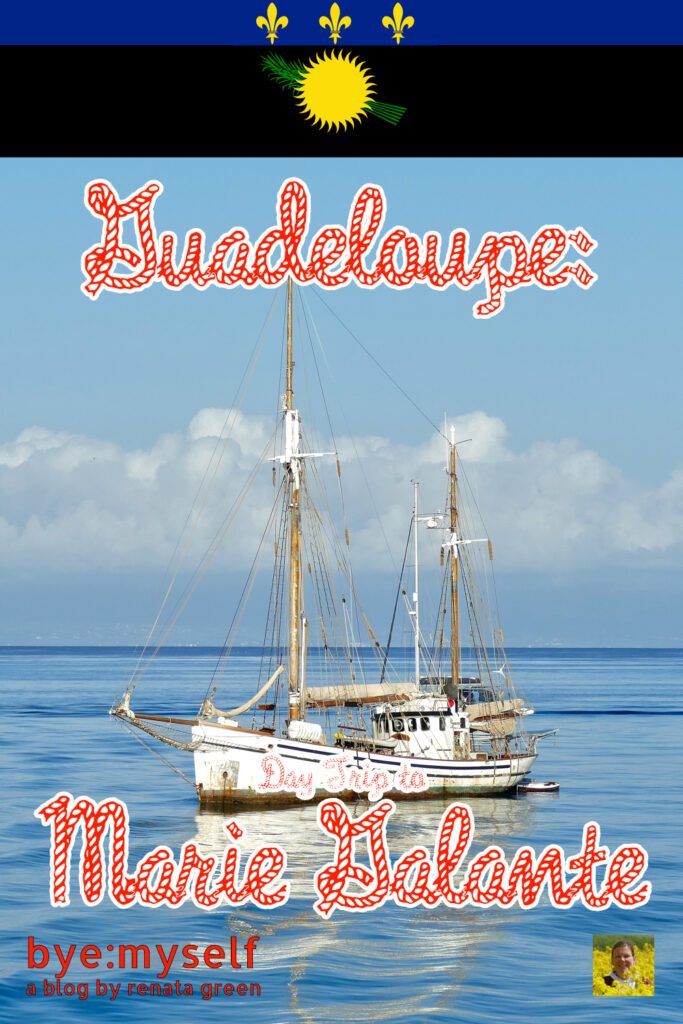
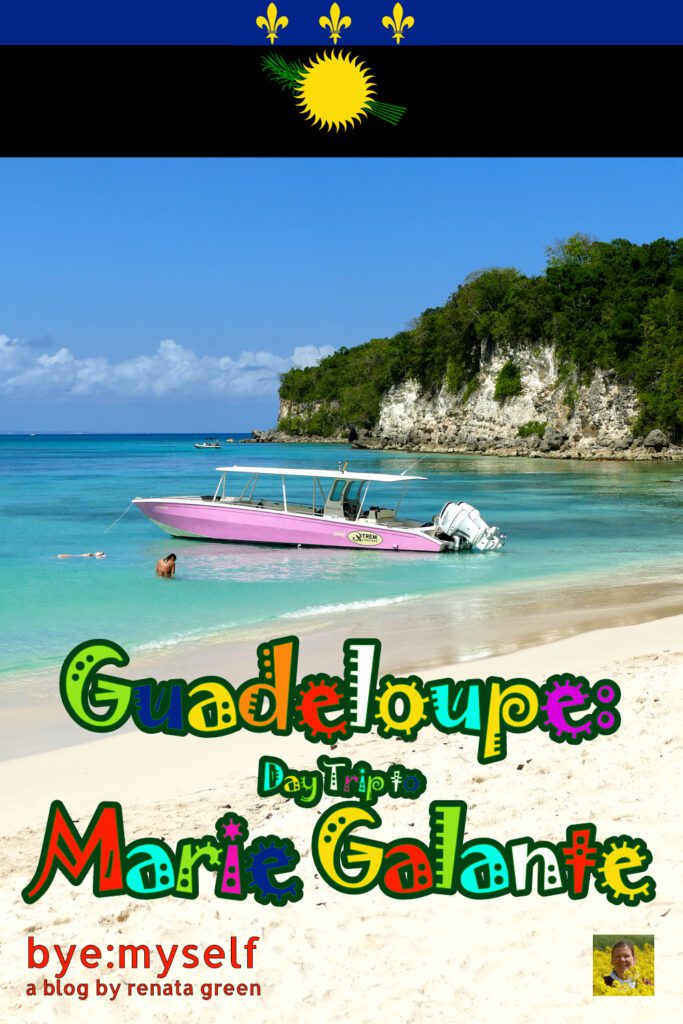
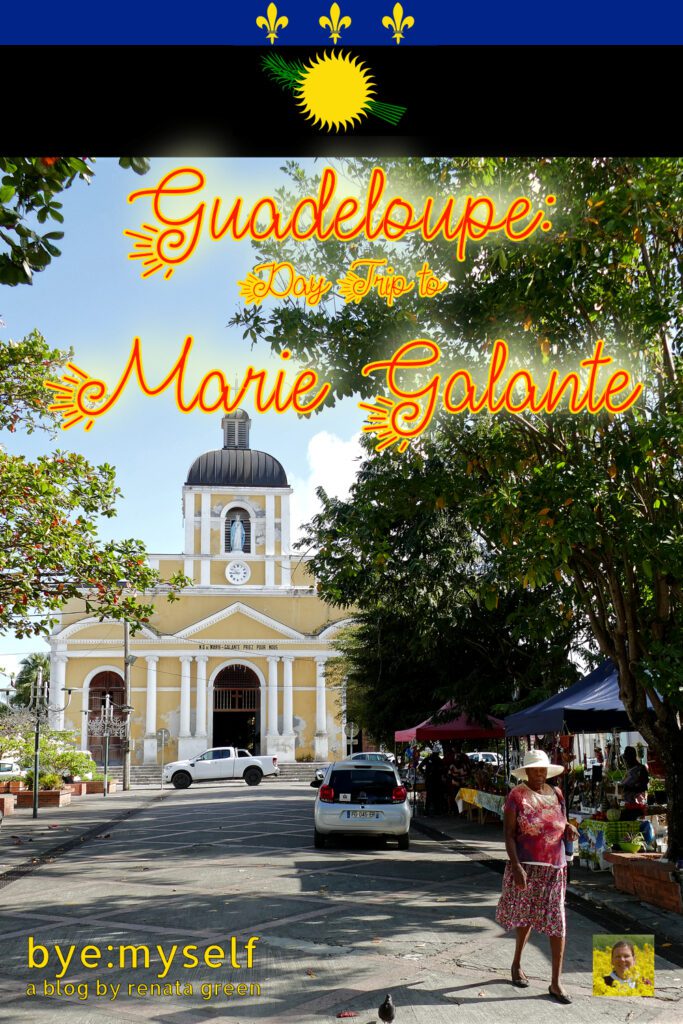
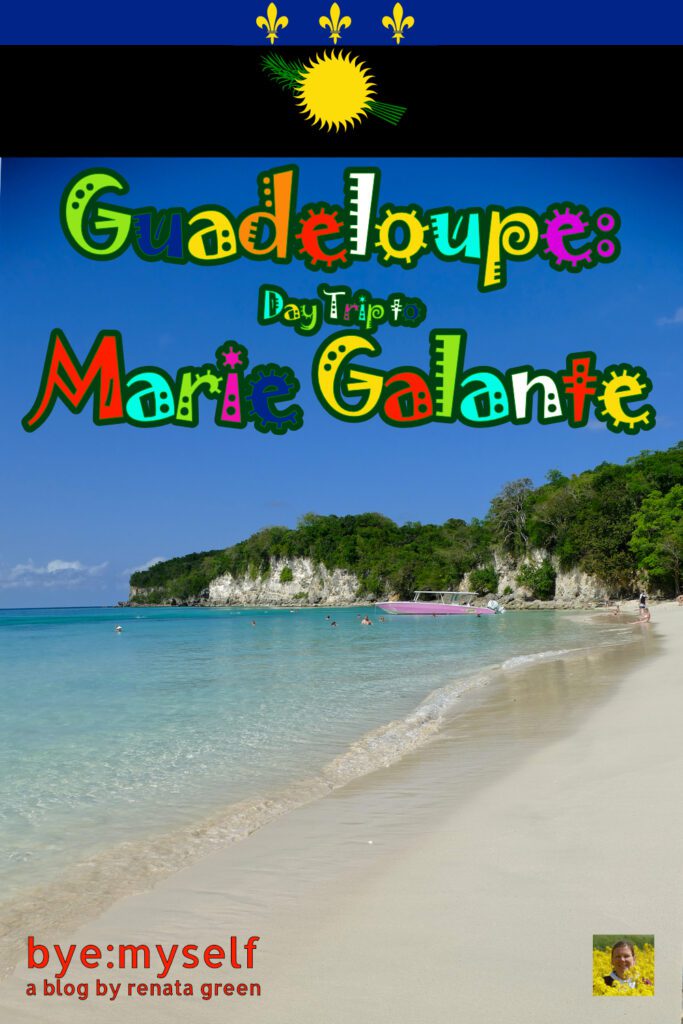
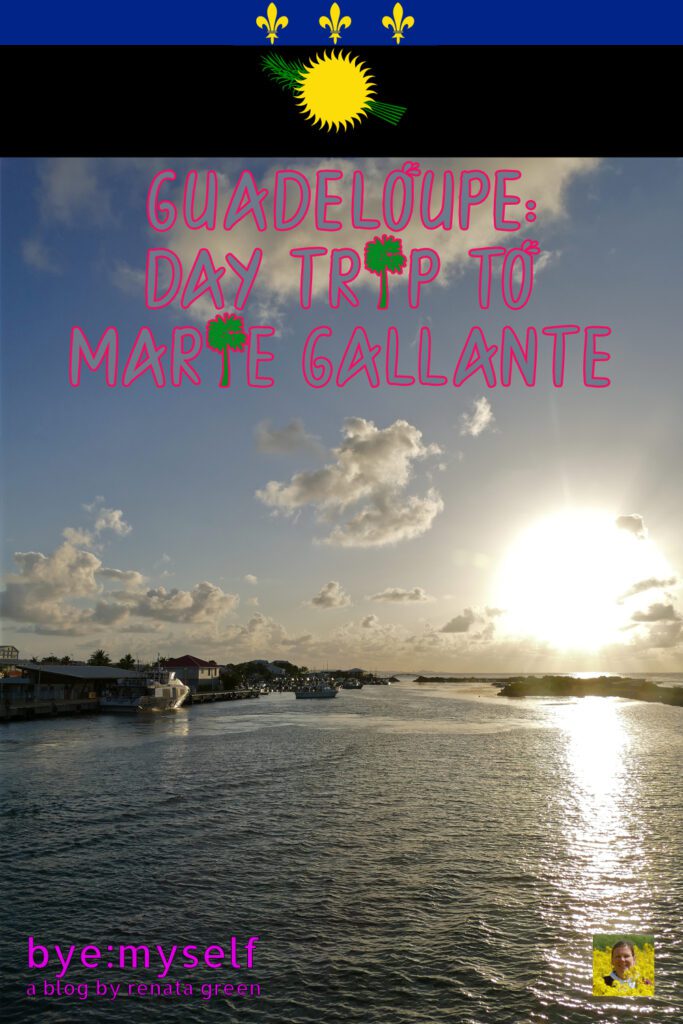
Did You Enjoy This Post? Then You Might Like Also These:
Guide to CAMAGUEY – Cuba’s Modest Beauty
Best Places to Visit in Basse Terre, the Western Wing of GUADELOUPE (also by public bus)
Grub First, Then Ethics – Brace Yourself for Cuba
What Not to Miss in ARUBA, the Caribbean A-Lister
The Best Street Art in MARTINIQUE
ARUBA: The Powerful Murals of San Nicolas
The Best Beaches in Guadeloupe You Can Easily Visit by Public Bus
Best Street Art in GUADELOUPE
* This is an affiliate link. If you book through this page, not only do you get the best deal. I also get a small commission that helps me run this blog. Thank you so much for supporting me!

